Ouidah is one of the cities with the most history in Benin. In a relaxed and peaceful atmosphere, there we find a great cultural history that explores everything related to voodoo and the history of the first inhabitants of this country. However, this city also has a black history as it became one of the main points of departure for slaves from the African continent during the heyday of shipments of cheap labor to the New World by the hand of the colonizers.
In Ouidah you can visit the final part of the journey made by slaves when they were sold by merchants and embarked on ships from the door of no return. This place is loaded with symbolism as it shows the cruelty in which slaves were treated. Currently, in 2022 they were carrying out different reconstruction works to make a tour in order to know the different points that witnessed one of the saddest stages of the African continent and that, today, aims to keep this history alive in order never to repeat it again.
Ouidah is also considered the cultural capital of voodoo. Therefore, if you visit the country during the first days of the year you can not miss its festival where you can enter one of the most mysterious and at the same time unknown religions. If you do not go during the festival, do not worry that you can also visit the sacred grove to understand the relationship between nature and the deities of voodoo, and visit the temple of the pythons; although we did not go as we considered it as a “circus”.
Ouidah is also a city of museums. If you have time and curiosity, there you can visit the Ouidah History Museum, located in the old Portuguese fort of Sao Joao Baptista de Ayuda and which is a clear example of the Portuguese presence in the baton of this city. You can also learn about other projects such as the Zinsou Foundation (also present in Cotonou) where you can discover contemporary African art and African sculptures by local artists.
The tranquility of the city, with wide streets, few tall buildings and located near the sea, make this place located near the seafront an ideal place to disconnect from the hustle and bustle of Cotonou and get to know the historic corners of the coast known as the Slave Coast. An unfortunately sad story and where millions of African slaves passed.
How to get there?
Ouidah is located 40 kilometers from Cotonou, heading towards Togo. The coastal road passes through this city. To get there by public transport, you can take a taxi from the Etoile Rouge in Cotonou. The journey takes around 1 hour, although it will depend a lot on the traffic you can find in the area of the Amitié stadium.
Taxis making the journey to Ouidah usually continue their journey to Grand Popo. Therefore, it is likely that they will leave you next to the main road and from there you can go to the city center walking for a long time or taking a motorcycle taxi for a price that you will have to negotiate.
What to do in Ouidah?
Ouidah is one of the cities that receives more tourists from Benin. We recommend the following activities:
– Visit the Door of No Return and learn about the route taken by slaves before leaving Africa
Agbodrafo in Togo, Stone Town in Zanzibar, Beira in Mozambique, Cape Coast in Ghana or Ouidah in Benin have in common that they are populations located on the coast of the ocean from where departed, between the seventeenth and nineteenth centuries, millions of Africans who were enslaved to work on the new plantations they had discovered in the New World. The need for cheap labor and the control of the African continent by great European powers caused them to use different tribal groups to confront each other and capture people and trade them as slaves.
Ouidah also stands out for the monument of the Door of No Return, an immense door located right on the seafront, built by Europeans in the seventeenth century, and from where all slaves left to definitively leave the continent, their land and all their loved ones. When they crossed the door, it meant that they were embarking for an unknown destination in poor conditions and that they would not return to their home in Africa again.
Today, the government is promoting this place with a tour of the different parts that slaves passed before embarking. In this way, apart from attracting tourists, it also keeps alive the historical memory of one of the continent’s darkest episodes.
Ouidah’s slaves came mainly from the interior of different countries of the Gulf of Guinea, such as Nigeria, Burkina, Togo, Benin… After days and months of walking in subhuman conditions, they reached Ouidah, and from there began the following journey:
1.- Tchatcha Square: This is where all the slaves arrived and an auction was held between the buyers as if they were a commodity. They made them walk, they valued their strength, their dexterity and if they were a strong person they were worth more money than a person who was sick or coughing, who was worthless and often gave up. In the center of the square, there is a tree that was planted in 1747 by a Dahomey king and where slaves were tied by their legs so that they did not escape and to be shown to buyers who wanted to bring cheap labor to the New World. Once the slaves were bought, they were branded with fire on their backs in order to identify them. If this tree could speak, it would surely tell us the worst tragedy we’ve ever heard.
2.- The tree of oblivion: Once the slaves were selected in the square, they walked towards the sea. During the journey, they arrived at a tree where the story says that slaves were forced to do 9 laps of the tree with the intention of erasing all their memories and origins.
3.- Casa Zamai: After erasing each human personal history, the slaves waited in different houses such as the Zamai house, where they were locked up, without light, without food and in horrible conditions. They were unworthy people waiting for the ship to arrive to take them to their final destination.
4.- Mass grave: Those who survived the subhuman conditions of the slave trade advanced towards the door of no return, but there were also many who could not stand the conditions. These, being considered unfit slaves, set them aside and left them in a foundry where they would live their last breath. The British, Portuguese and French were the main slave traders. These bought slaves in the Kingdom of Dahomey. Slaves were mainly tribal groups that were enemies of the Kingdom and sold them in exchange for weapons or goods.
5.- The Tree of No Return: Here, in contrast to the tree of oblivion, slaves walked three times around the tree to ask that, once dead, their souls return to Africa. His body would never see Africa again, but his souls could return to their homes, to the continent from which they should never have left as slaves.
6.- The Door of No Return: Those slaves who managed to survive the entire route reached the beach of Ouidah. There, they crossed through a door and were shipped directly to the ships that would take them to the New World. According to the few statistics we have, one in three slaves died at sea. Crossing the door of no return was a very important symbolism. Those African slaves who had forgotten all their history in the tree of oblivion, now left behind forever the African continent never to return. Today, this door is a memory of millions of unworthy lives suffered for the interests of European colonizers. It is a place with a lot of significance not only for tourists like us, but also for many local people who have ancestors who had to pass, tragically, through the door of no return.
This route can be done without a guide, although you will need a motorcycle since the total of all the stages is about four kilometers in a straight line. We decided to do it with a guide and paid 3,000 CFA for transport for 3 people and 10,000 CFA in total for the guide. An intense experience to know a part of the history of the Gulf of Guinea.
– Visit the sacred grove of Ouidah, where you can learn more about voodoo culture
Ouidah is the cradle of voodoo culture. There, you can discover the characteristics of this religion that is official in Benin. In addition, you can visit a sacred grove that has many curiosities and representations of the different divinities that revolve around this religion.
It is said that King Kpasse, the first king of the Houedah people (hence the name Ouidah), disappeared in 1661 and became a tree in this forest. Voodoo believes in reincarnation and that is why this forest is very important to Ouidah. There, you will find represented different elements such as the Zangbeto, who is the guardian god who is responsible for the protection of the night; Zabata, the god of the earth who prevents disease; Tuleba, the king of strength and longevity; Shongo, god of rain and storms; Bokono, god of oracles… All these deities are represented within this sacred grove.
For voodoo, ancestral people are the wisest. That’s why in the forest we also find statues symbolizing 100-year-old men giving advice on life. In addition, you can find the man who has two faces represented by Abajigan. First, it shows the good face and then the traitor’s face. Here we were told that your friend can also become your enemy.
The entrance to the sacred grove is advisable to do it with a guide because in this way you will discover what symbolizes each representation that you will find in the sacred forest. It has a cost of 1,000 CFA per person, and separately if you want to take photographs you will have to pay an extra 2,000 CFA. Think also of bringing a small note or coin to make an offering to the voodoo tree, the tree that became the first king of the village of Ouidah.
– If you’re lucky, attend a traditional celebration
Voodoo religion has different celebrations commemorating different stages of the voodoo process. For example, we find the initiation dance, the dance of gratitude for the harvests, the dance of the Zangbeto, the Geledé dance… If you’re lucky, you might be able to see one live. We were able to see an initiation dance in Abomey (if you want, you can read our experience here).
One of the most special ceremonies for the Voodoo religion and the people of Ouidah is the Gozin ceremony. Every seven years, 41 virgin or menopausal women carry a ceramic jug on top of their heads with water from a sacred river. Of these women, there are some who are possessed and who cannot look back until they reach the end of the road, leave the water and then there they are all purified with water to start voodoo and finish the ceremony. It is a more difficult event to see since it is done every seven years, but if you are around during the date that it is celebrated, do not hesitate to go see it. Of course, always with respect and empathy to understand the beliefs of their religion.
Apart from different ceremonies that you can find by chance, Ouidah celebrates the most important festival of voodoo in Benin. It takes place on January 10. It is known as the International Voodoo Festival and there you can experience different celebrations, although it looks like you will also be accompanied by many tourists. It can be a good occasion to attend different rituals of this religion in a city that, surely, that day ceases to be quiet for a day.
– Stroll through the quiet town of Ouidah
Ouidah is a pleasant city to walk around in order to observe local life, go see the market and chat with the curious who will greet you and want to know where you come from and talk to you for a while. In addition, you can rest in the shade of a tree while you eat a piece of fruit and try to chase away the people who will come to offer you the services of guide to learn about the history of voodoo and the history of slaves.
In Ouidah you can visit some museums such as the Zinestou Foundation, which stands out for its exhibitions of contemporary African art, the Museum of History of Ouidah or the Villa Ajavon, a museum that shows the Afro-Brazilian influence of architecture, as we could also see in Portonovo (if you want to know more, you can click here).
And, finally, many people will tell you that in Ouidah there is a temple of pythons since they consider that these animals bring prosperity and good harvests. However, the visit, as we have read, has become a circus where you take photos with the animals around your neck and we considered it not appropriate to go.
In short, Ouidah is a quiet city compared to its neighbor Cotonou (if you want to know more you can click here), where you can walk and savor the African rhythm that you will find with the people you will meet and that will surely make this city, an indelible place on your trip to Benin.
Where to sleep in Ouidah?
Ouidah has a wide range of accommodation. Among these we highlight:
– Hotel de la Diaspora: This hotel is located next to the beach and has different types of rooms and a swimming pool where you can cool off. Located a few meters from the door of no return, there you can walk by the Atlantic Ocean and rest and disconnect for a few moments from the intensity of your trip through Benin. The only drawback is that it is far from the city center and, therefore, if you want to go for a walk around Ouidah you will have to find some transport that takes you there. For more information, you can click here.
– Le Jardin Secret: A very nice place in the center of the city with quiet rooms and an interior patio with trees and plenty of shade where you can enjoy many good meals and very good value for money. Its owner is Pascal, a Frenchman who travelled from France to Benin in 2007 on a “mobylette” motorcycle and who still has it on display there. The accommodation workers are very attentive and will help you with whatever you need. Definitely the best value choice from Ouidah. To see their website, you can click here.
Our route
DAY 1: After the arrival of Xoli and spending the first days in Cotonou, we left this great city to visit one of the most important cities in the country, not for size, but for historical relevance. Ouidah was waiting for us to learn the story of millions of slaves who left this point for the New World.
The journey to Ouidah took no more than two hours. We left from the Etoile Rouge in a taxi that took us to the accommodation itself: le Jardin Secret. There, to our surprise, we met Pascal, the owner, who showed us his motorcycle with which he had left France and had traveled the west of the African continent until he said enough to Ouidah, where he settled founding this quiet accommodation that had a shaded tree yard that invited you to rest for a while.
Today, we would take the opportunity to walk to the city center and quietly know its streets, which are filled with pilgrims and curious on January 10 to go to see the International Voodoo Festival. We went to one of the squares where the python temple was, which we observed outside, and then we went into different local craft shops to see the paintings and clothes they themselves created. Ouidah was a very nice city, with children who looked at you shyly and adults greeting you once you had already passed by. We went to a market to buy four things and went back to our accommodation.
A quiet afternoon, of transition, before knowing the most characteristic features of this city such as the sacred grove and the final route of the slaves, which we would do the next day with a guide, Remy, and a motorcycle that Pascal had reserved for us. We had dinner at the same accommodation and after chatting for a while, we went to rest to be ready for the next day.
DAY 2: Today we had met with Remy to visit the historical and cultural part of Ouidah. After breakfast, we waited at the accommodation and the guide did not arrive… After a while, we decided to call and from the accommodation staff, they told us that today Remy had found a larger group of tourists and that he had gone there to act as a guide; but let us not worry that we were sent to Hipolit. In Africa, these changes are frequent and totally understandable, because Remy probably had the opportunity to make more money with a large group than just with the three of us.
So, after a while, Hipolit appeared with a companion of his and with two motorcycles we went, first, to the sacred grove of Ouidah. There, we were able to enter a natural space that was full of statues and tree representations. Luckily we went with a guide because there were few explanations, and in this way we were able to better understand the relationship of voodoo with nature.
In fact, this forest is very important to the people of Ouidah because they consider that there, in a tree, the first king of their tribe has been reincarnated. In addition, you will be able to observe different gods that are related to different elements such as fertility, good harvest or longevity; And that’s why, for voodoo believers, it’s a very special place to see the different gods.
After this first visit, we took the bikes and left the city of Ouidah towards the sea. The first stop was in Tchatcha Square, after passing through small paths between houses because much of the road was cut under construction. We were told that the Benin government was boosting the tourism sector and, therefore, was reforming the entire slave route to make it more accessible and attractive (if you can call it that) for visitors, whether local or international.
In Tchatcha Square, Hipolit told us that it was the place where the thousands of slaves gathered before being sold and destined for an unknown place outside the African continent. Therefore, the square was large, with a centuries-old tree where the slaves were tied and, in this way, the buyers could observe them closely to see if they were okay, maintained strength and if they were really worth the price they had agreed with the seller. It was like a wholesale fruit market, but with the only difference that the fruits were human people who suffered unworthy treatment from their capture, throughout the journey until their final sale. A sad episode that unfortunately many African peoples have experienced (if you want to know more, for example, about the case of slaves in Stone Town, you can click here).
One of the curious aspects of this square was a manor house that was located directly opposite. It was a wealthy, luxurious house, with walls that protected its interior. According to Hipolit, that house belonged to the family of Francisco do Souza, who had previously been a slave trader and, today, his ancestors still lived there.. Obviously, the current tenants of that house are probably not in favor of slavery, but it was curious, as our guide told us, that this house was still there as a memory of history. A house that would surely have been erected with the money from the sales of slaves to European colonizers.
After this square, we advanced with our motorcycles along dirt roads that were completely under construction. They were putting shoulders on the side and leveling certain pieces and then paving it. The next stop was the tree of oblivion… This was a tree where slaves went around in order to erase all their memory and dignity. According to Hipolit, men made nine rounds of the tree, while women did seven. We were shocked to see the tree and think about the millions of stories and faces you will have seen in these centuries of slavery in this part of the African continent.
The penultimate stop was to see from the way itself the Zamai house, known as the last spot where slaves waited in infamous conditions before ships arrived and loaded them on the high seas. There, there was also a mass grave for all those who were not able to withstand those degrading conditions. And finally, we knew we were approaching our final destination when we saw the sea right in front of us and found the Door of No Return.
The Door was completely fenced because they were renovating it, so we could only see it from one side. This door symbolized the last space where slaves walked before leaving the African continent forever. Therefore, it was called non-return since they began a journey of weeks and months that would take them to a new destination where they would be forced to work as slaves. Although it was under construction, it was impressive to see the majesty of this door right in front of the beach and the sea. A very emotional place for many local people, since, as Hipolit told us, there are many Beninese people who have had relatives and ancestors who have passed through this door.
Next to the door, a small path led to another monument that was a memorial to the Jubilee year of 2000 and was erected as a memorial to the evangelization of Benin. From there, you can hear the sound of the waves and imagine the noise heard by slaves embarking on large ships… A deafening, dark, sad noise.
The Slave Route and Ouidah is a UNESCO World Heritage Site. His visit may not be very attractive because he tells you a tragic story that happened in the last centuries in this country. But thanks to this heritage, many feel obliged to visit it in order to keep alive the history and memory of events that, unfortunately, are also part of the history of this culturally diverse country.

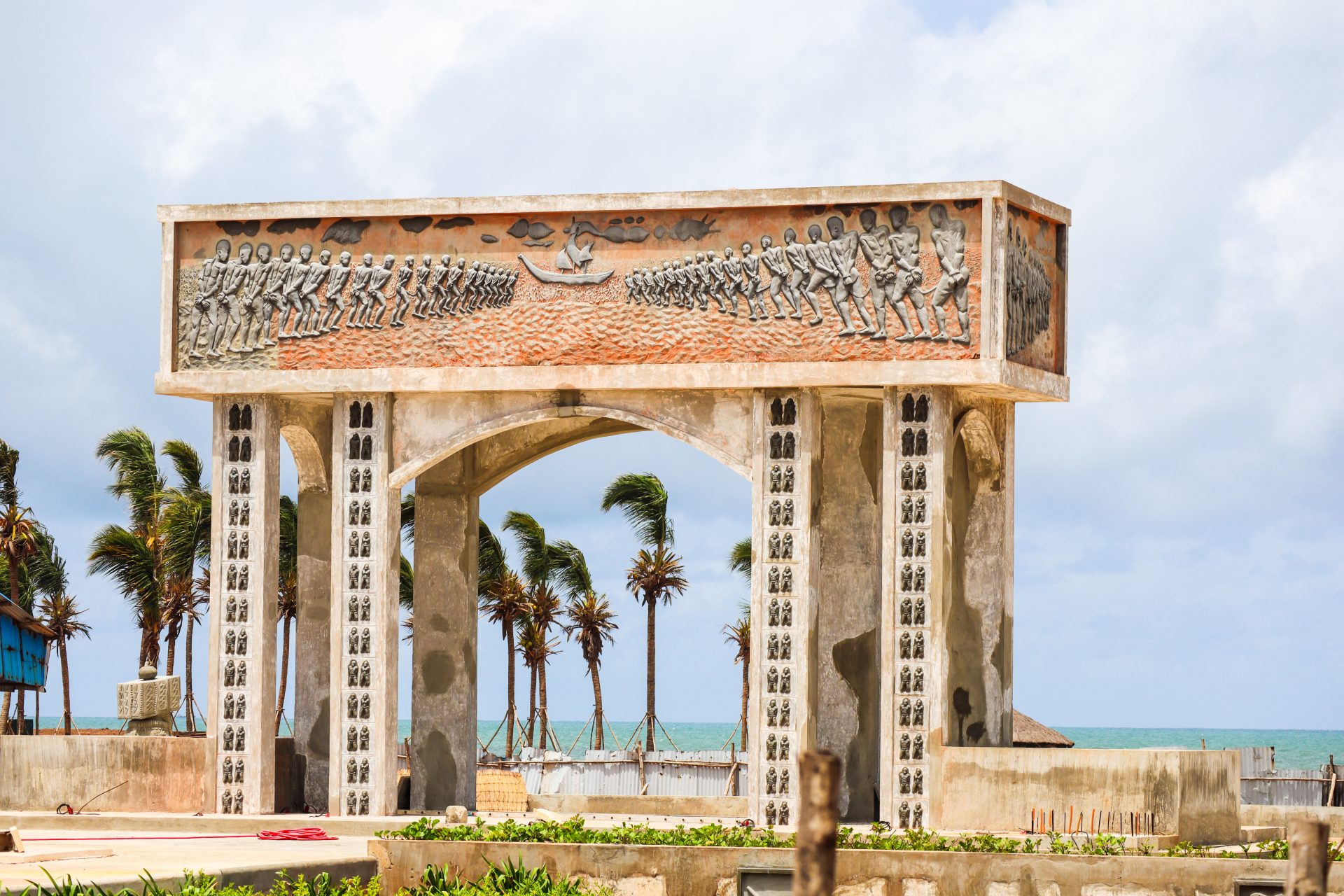

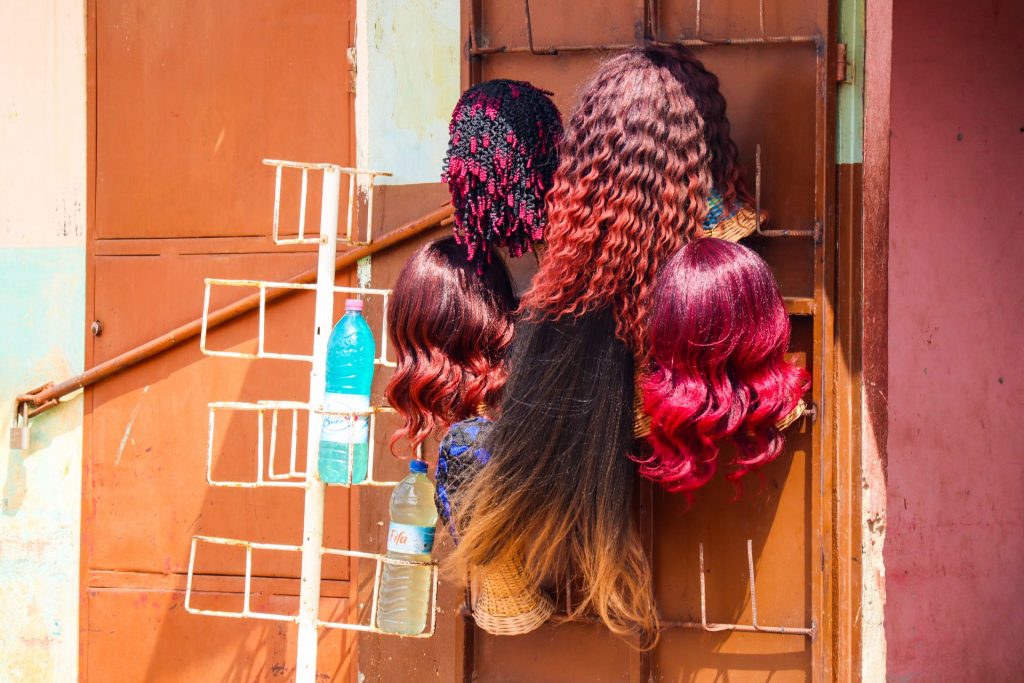


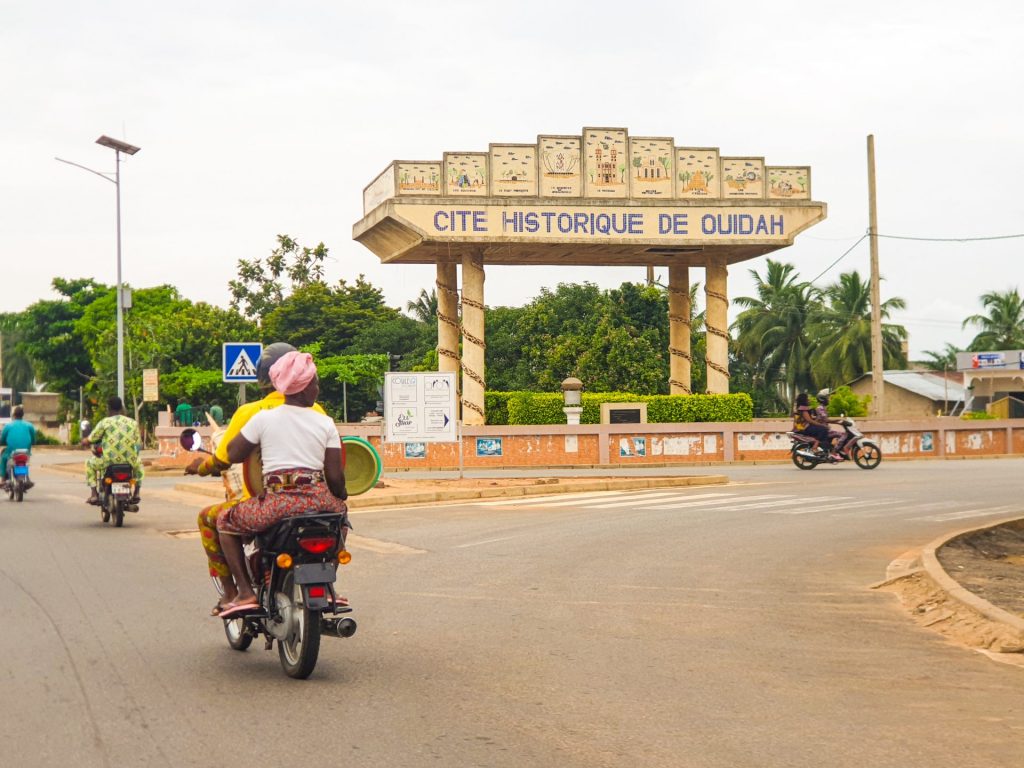
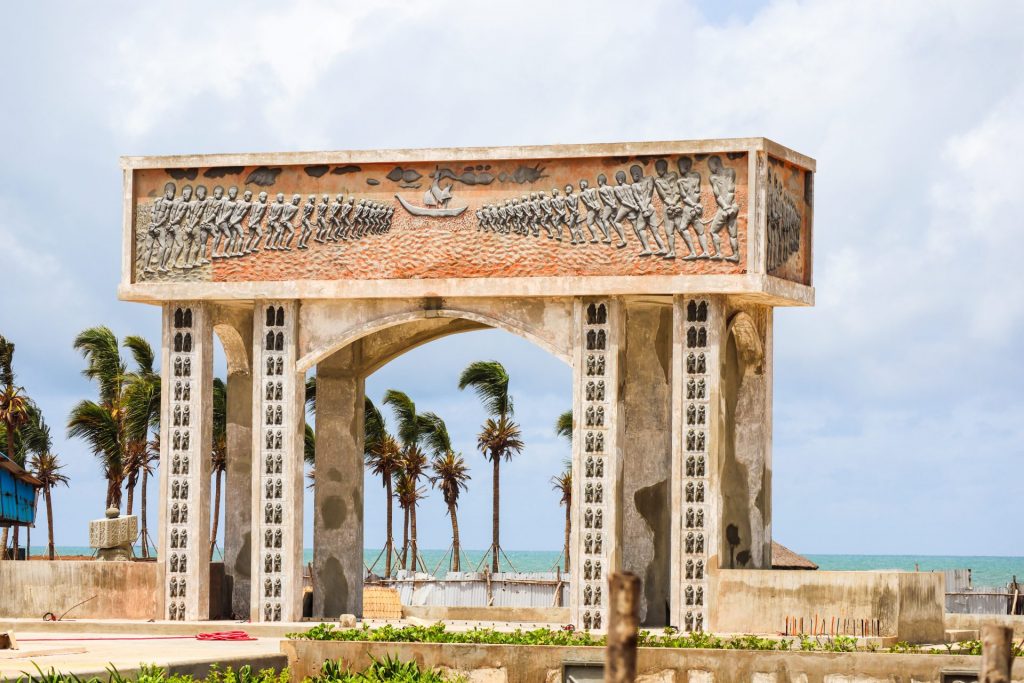



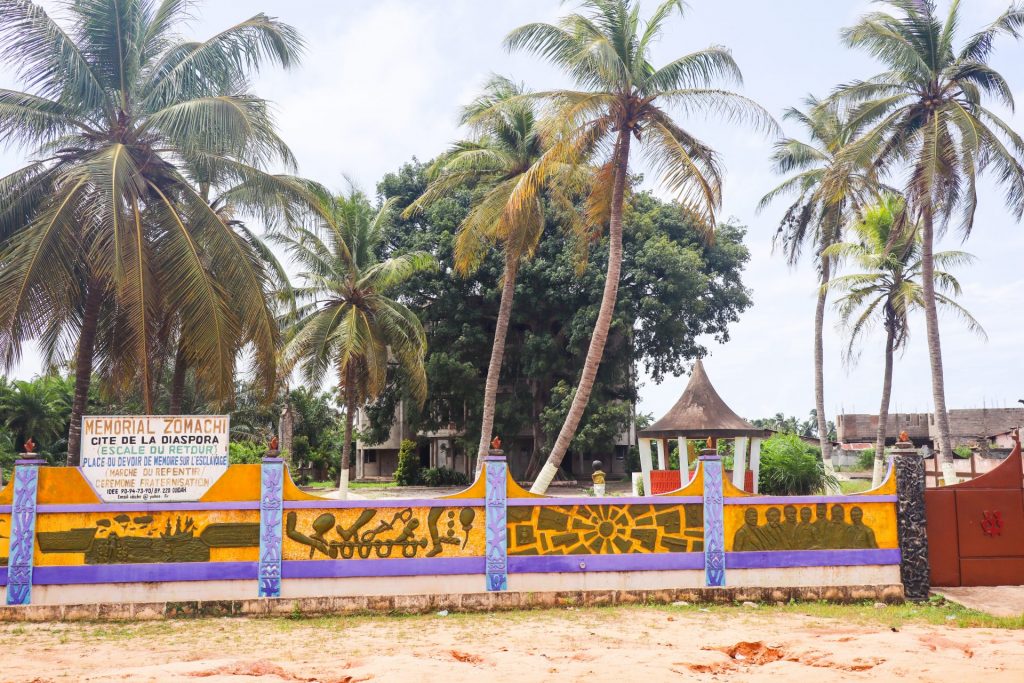
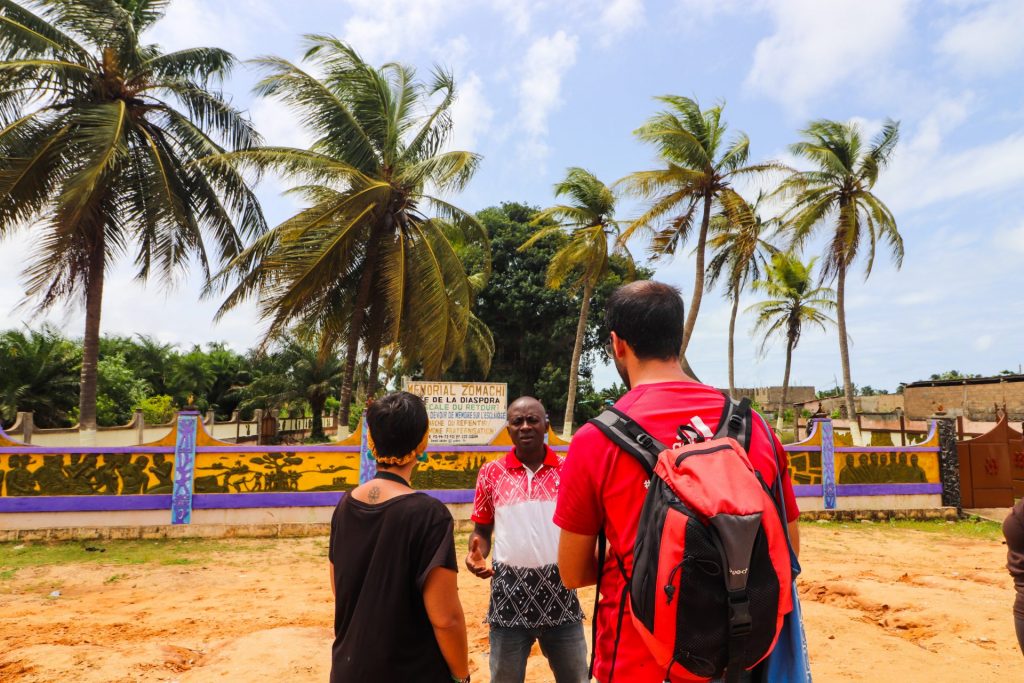
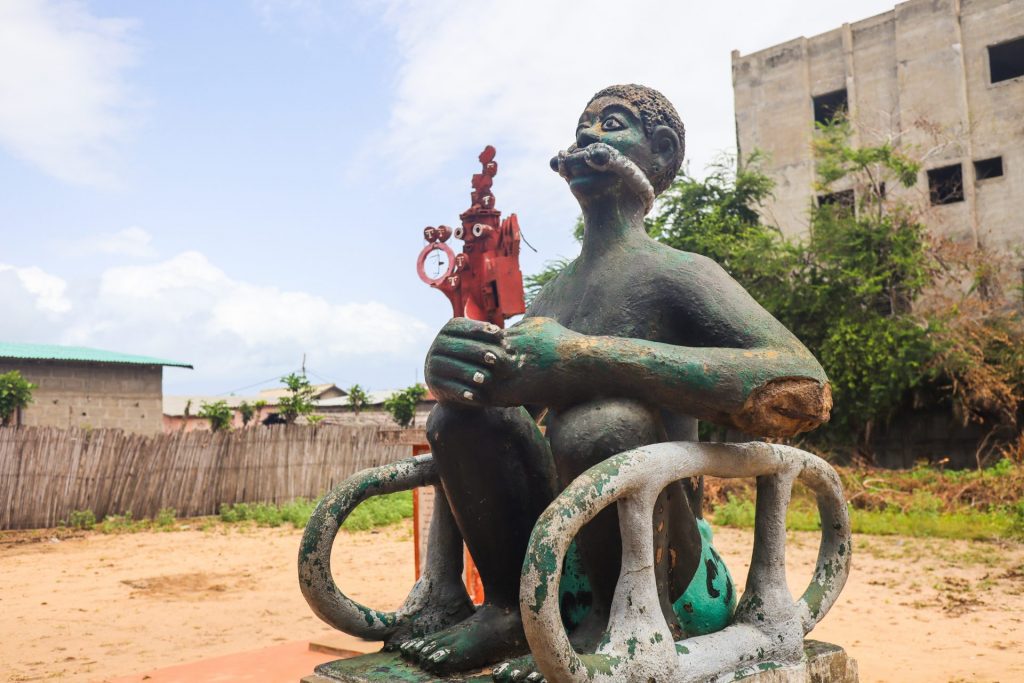
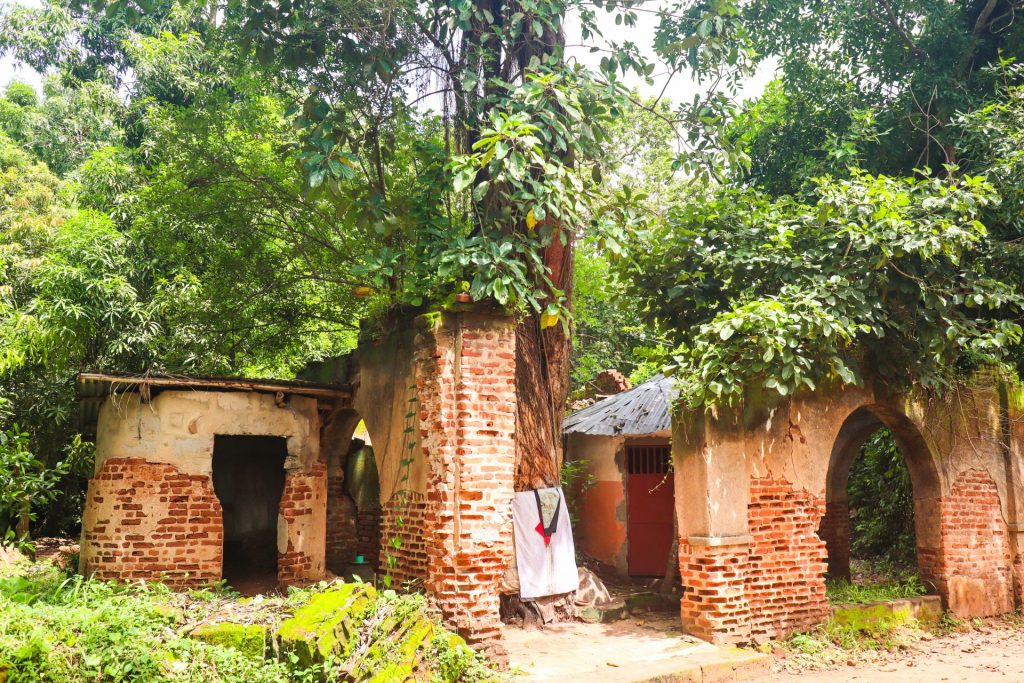

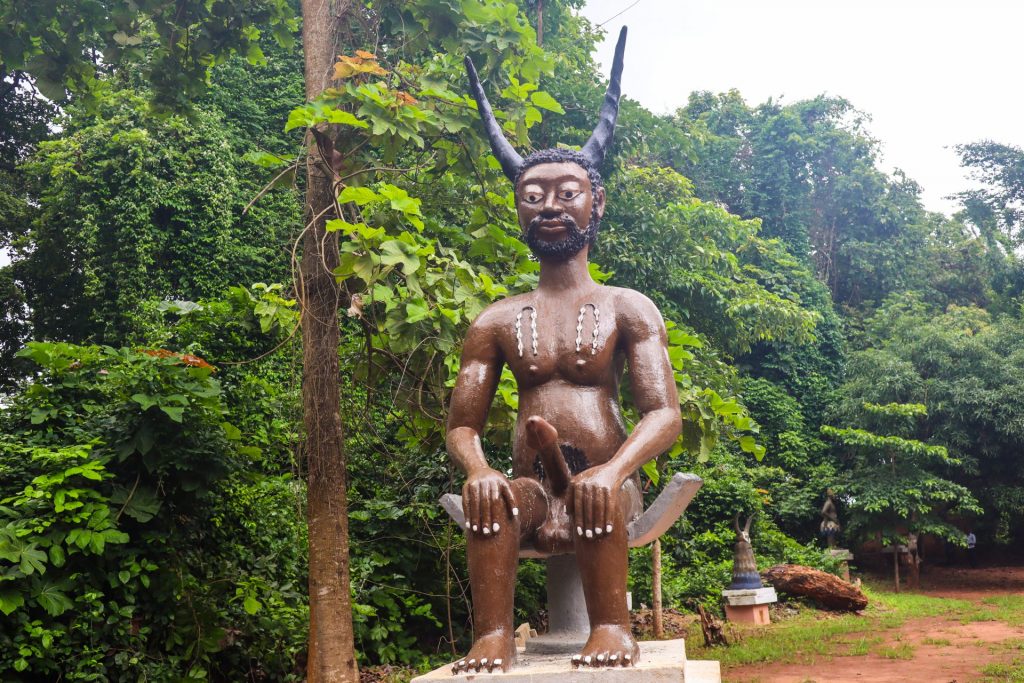




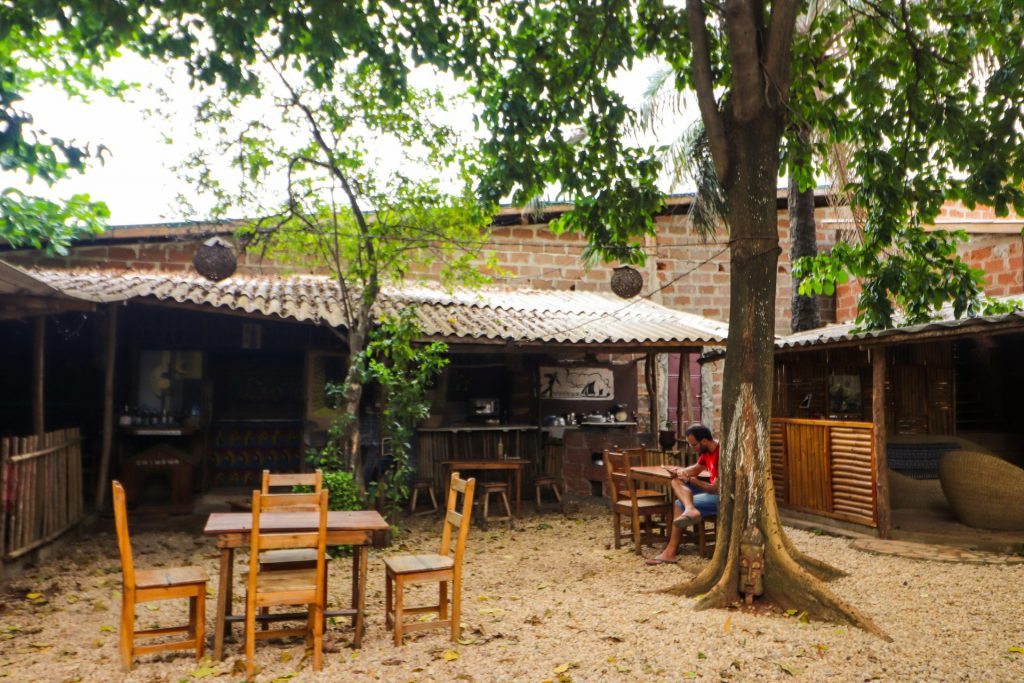
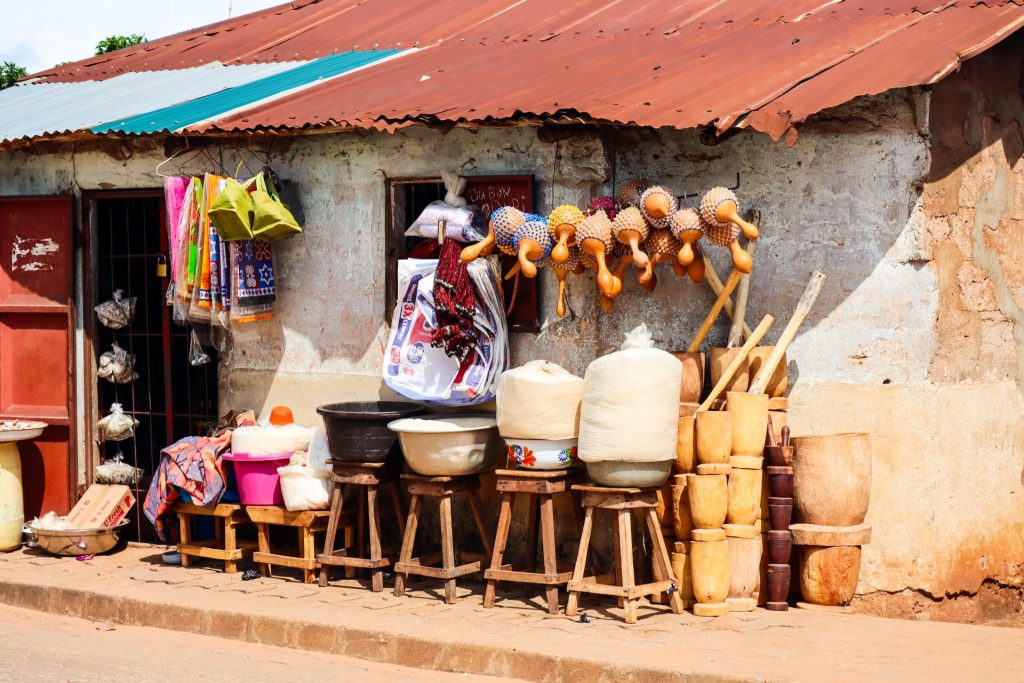
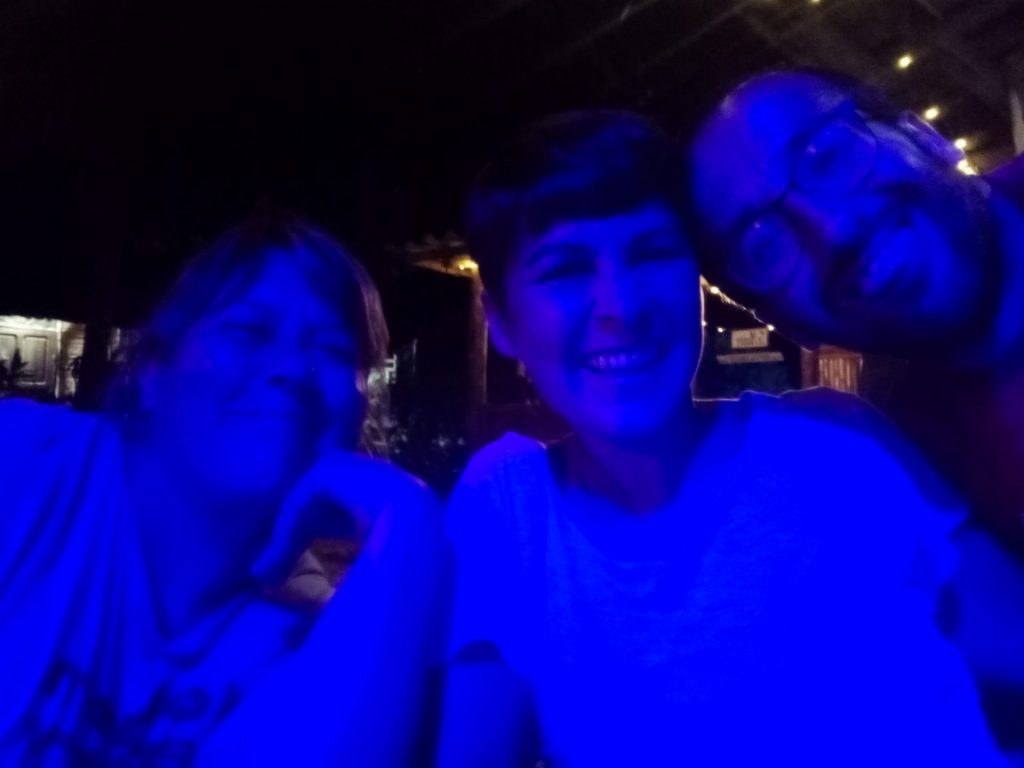
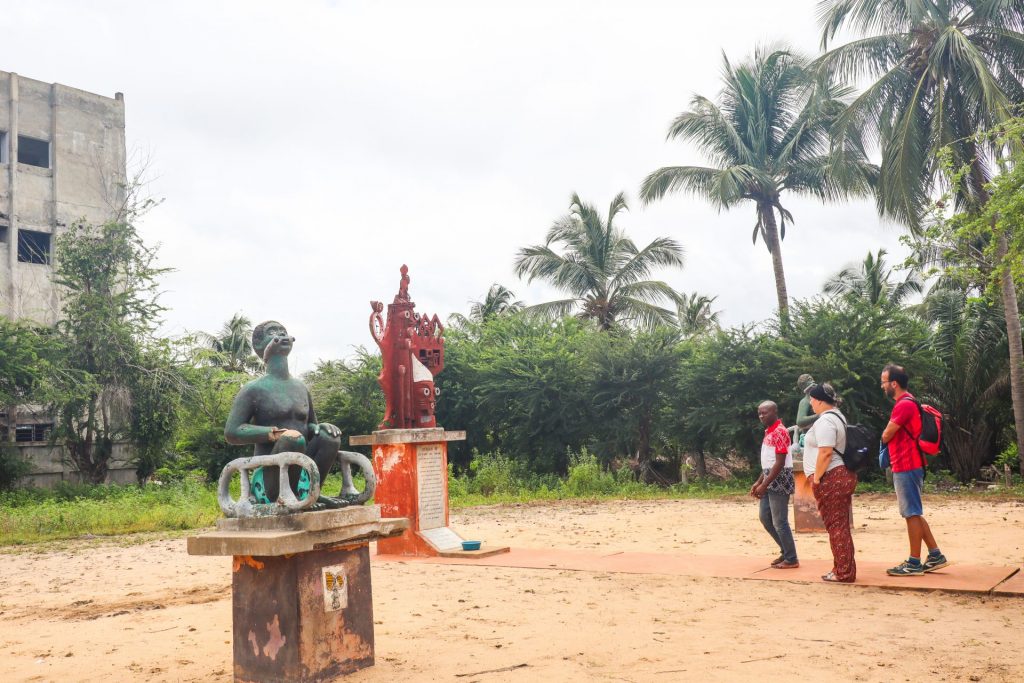
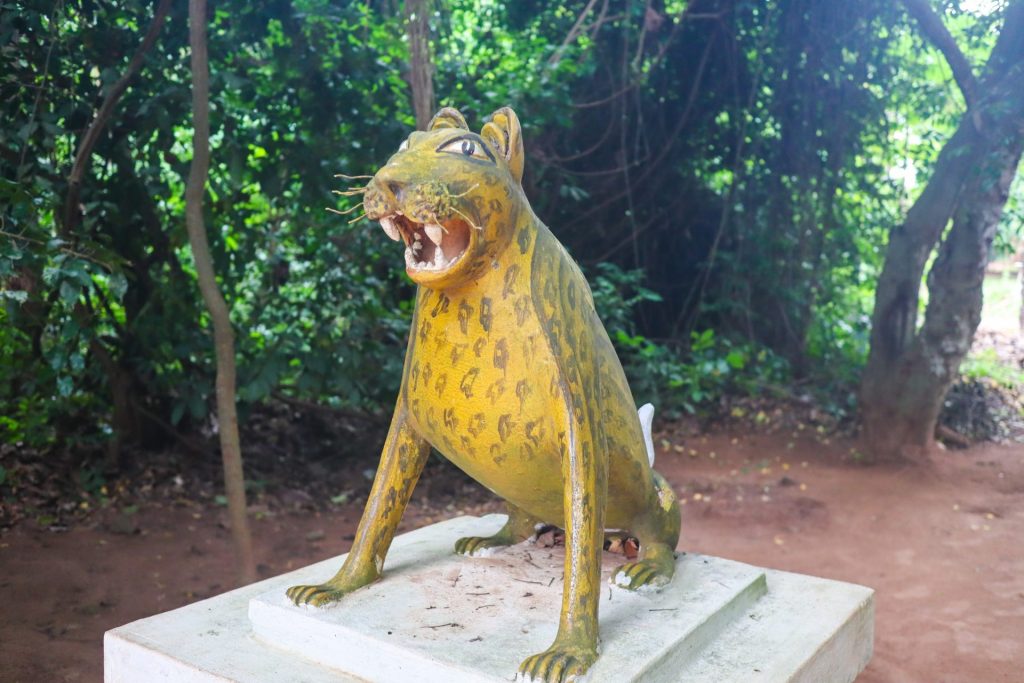

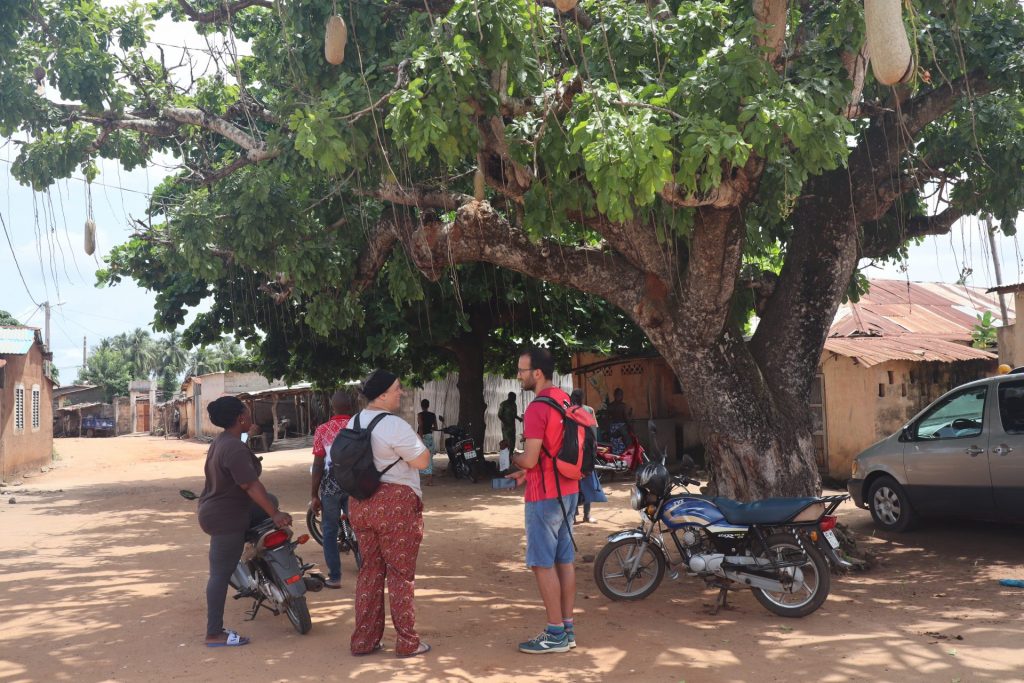

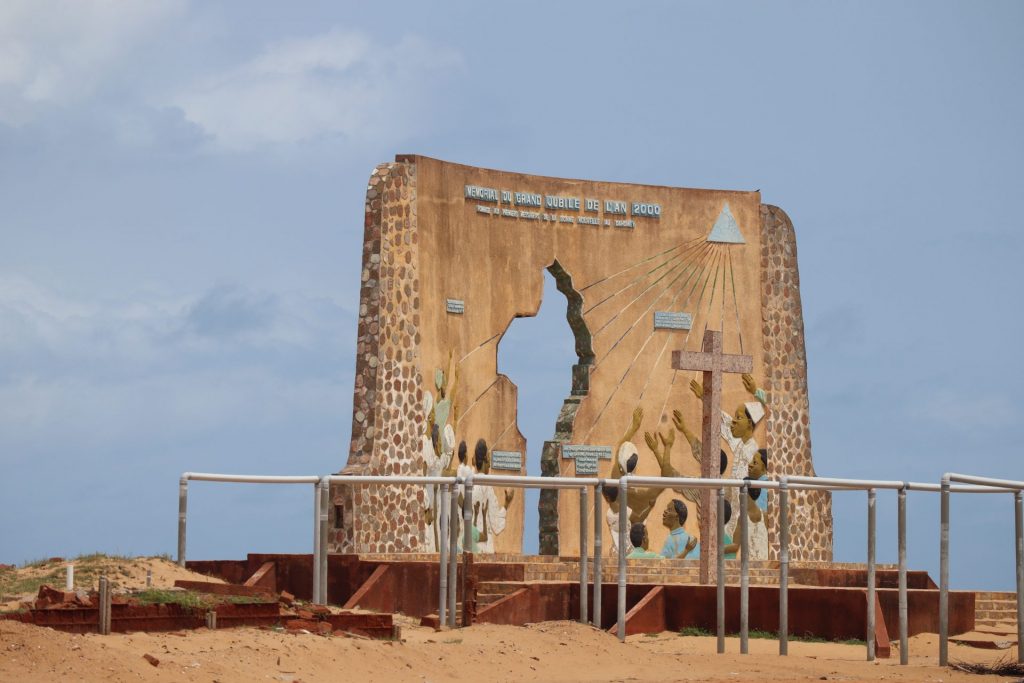




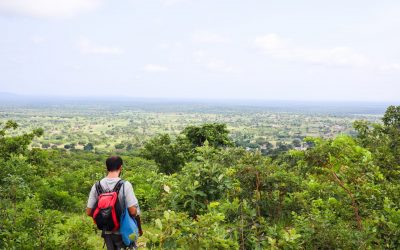
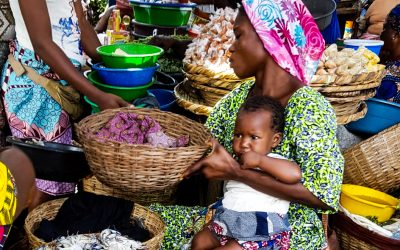
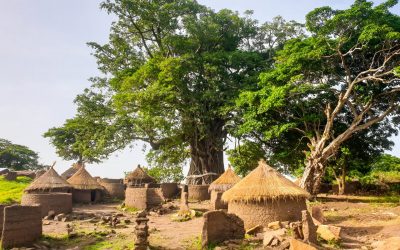

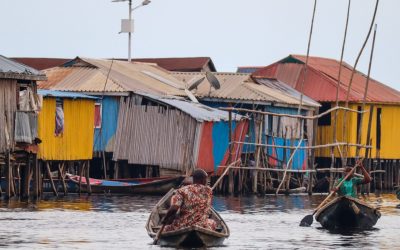
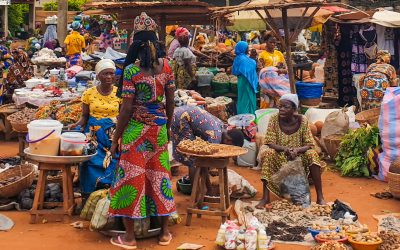
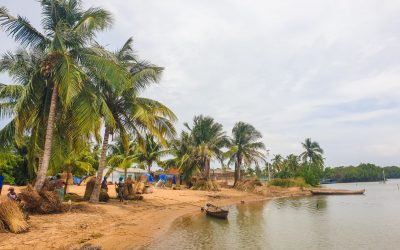
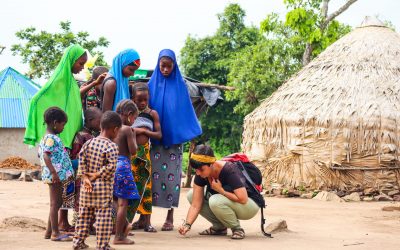
0 Comments